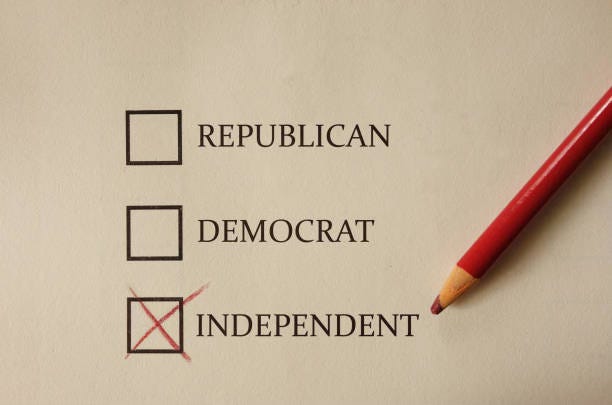We’ve all heard the standard explanation of Donald Trump’s 2024 election victory. The Republican did surprisingly well among some traditional Democratic constituencies—primarily Hispanics and non-white men. For example, Trump got 28% of all Hispanic voters in 2016; 36% in 2020; and 48% in 2024.
Now, the Pew Research Institute has released its prestigious Validated Voter Survey that indicates an even more fundamental reason for the 2024 election results. While the share of partisan votes was little changed between 2020 and 2024, the behavior of independent voters shifted.
What prevented a Harris win was the composition of the electorate: Republicans and Republican-leaning independents made up 51% of those who actually voted (up from 47% in 2020). Democrats and Democrat-leaning independents made up just 48% of those who voted (down from 50% in 2020). And voting preference among all independent voters (including ones that lean toward a party) were split right down the middle in 2024—48% for Trump, 48% for Harris. In 2020, these independent voters chose Biden by 9 percentage points. It doesn’t take a math whiz to see why Trump won by 1.5%.
And, turnout wasn’t the issue either. Fully 64% of the eligible electorate voted in 2024—the second-highest since 1960. In fact, based on Pew’s analysis, Trump would still have won if every eligible voter turned out. It was the shift in overall independent voting that was the key. If this analysis is correct, the national Democratic Party has an even bigger challenge to overcome in the 2028 election—reclaiming independents.



